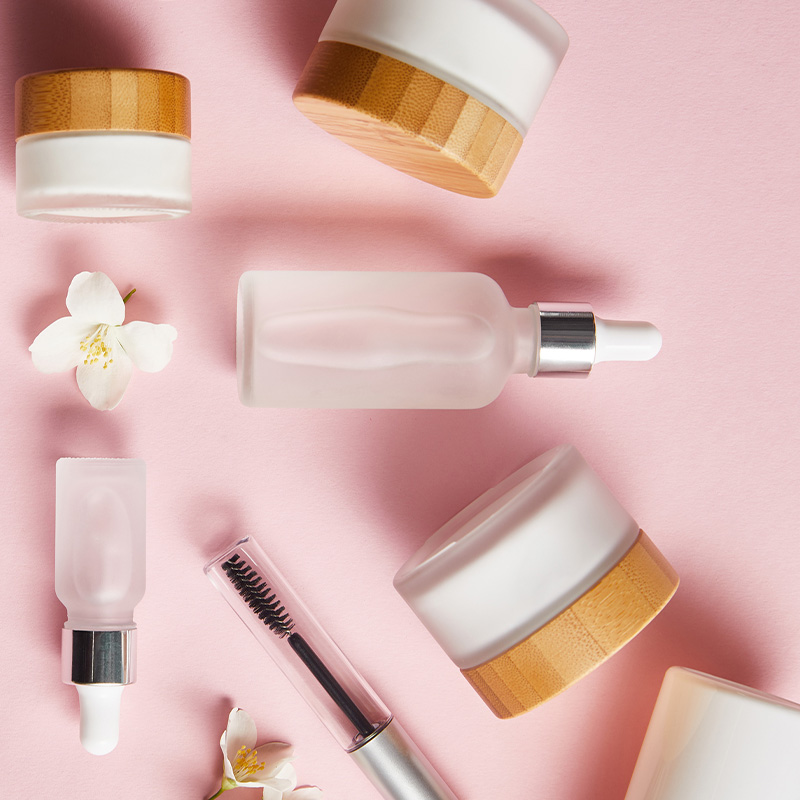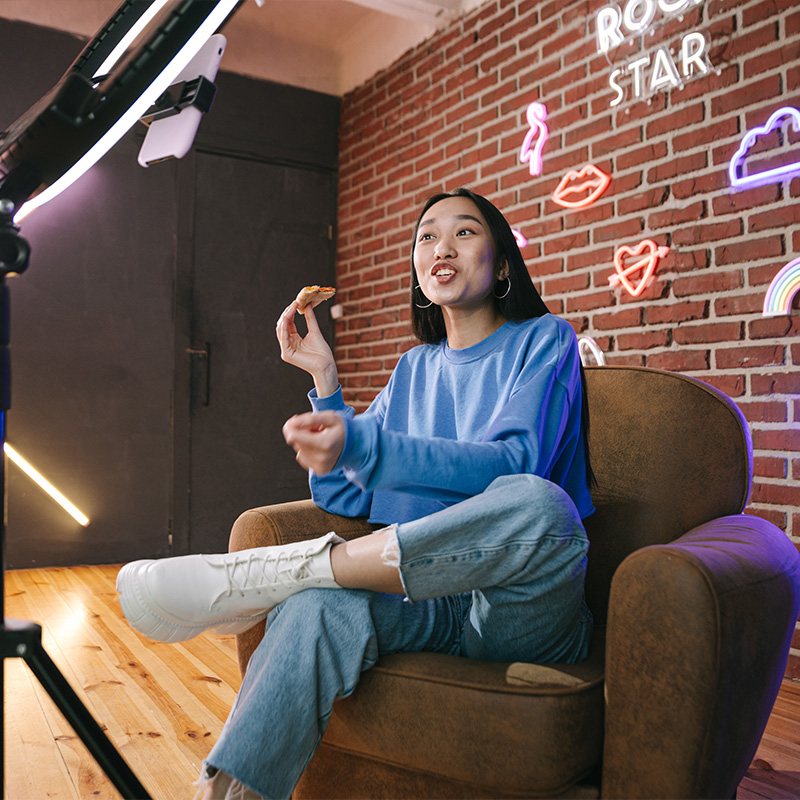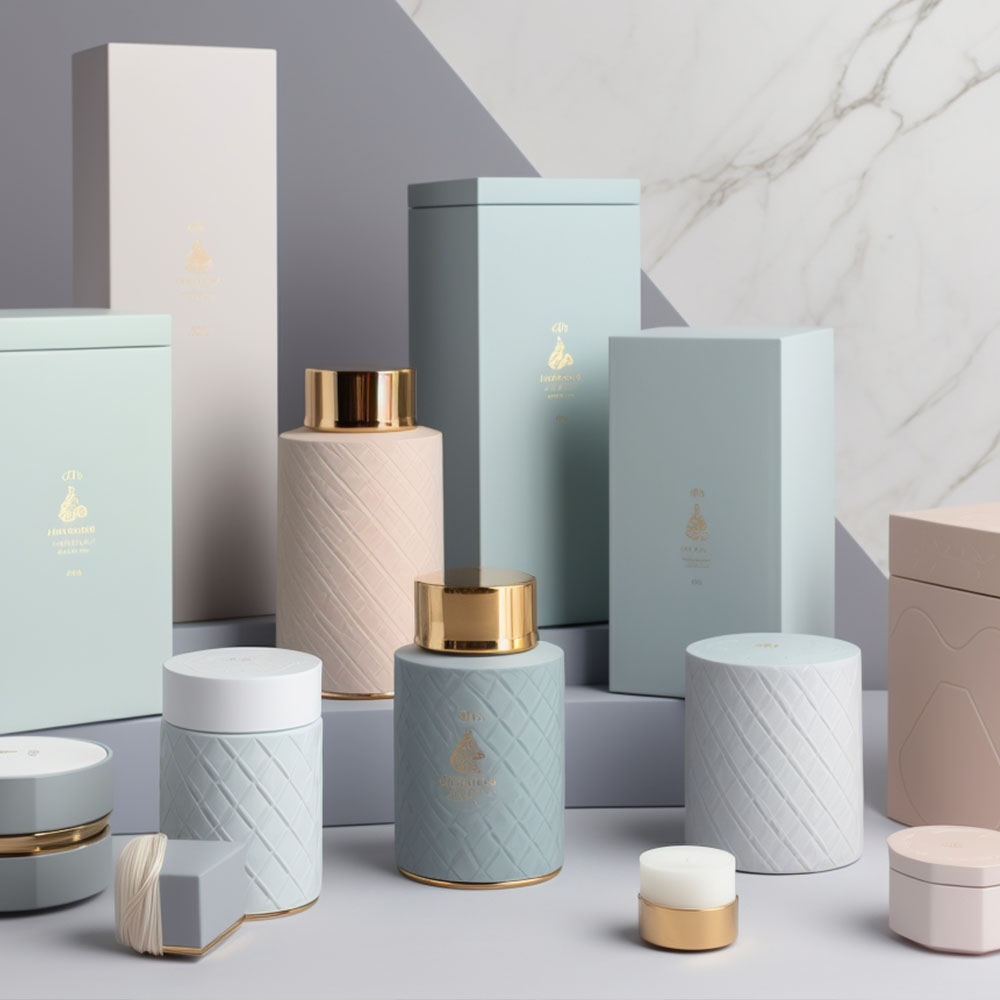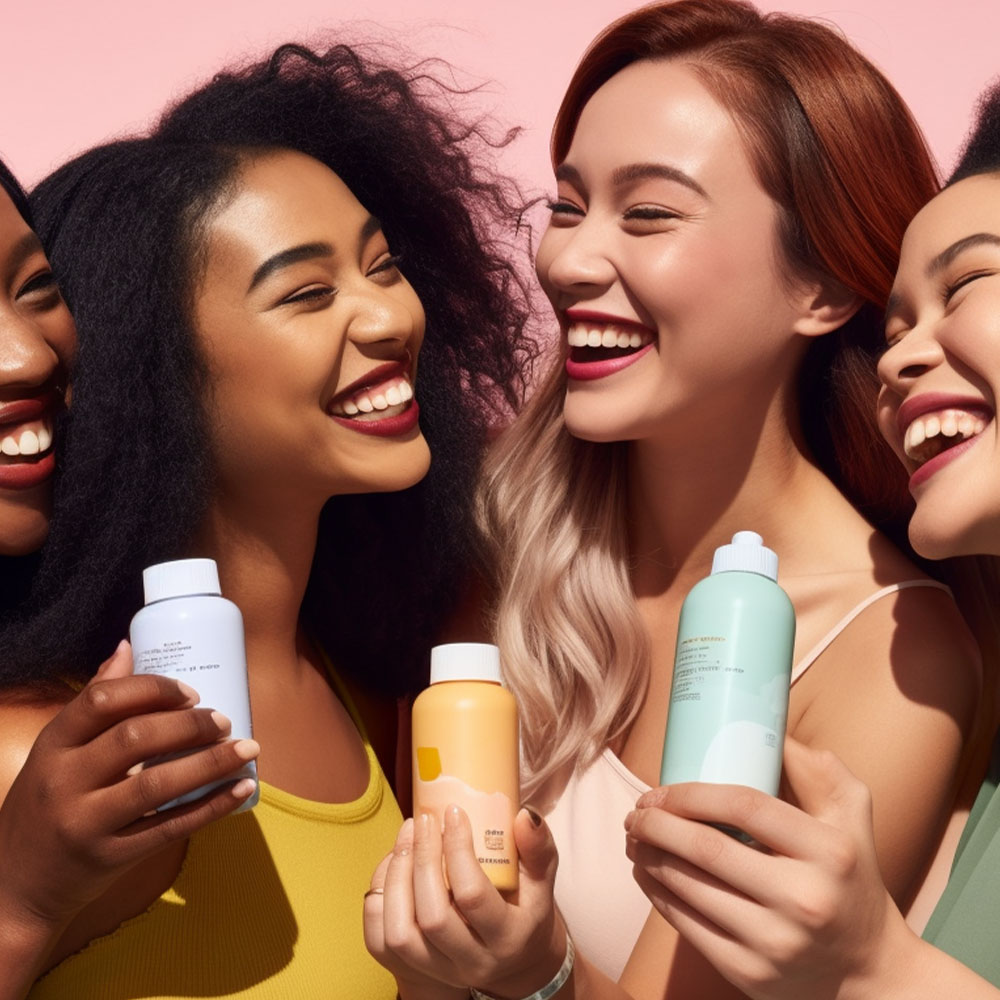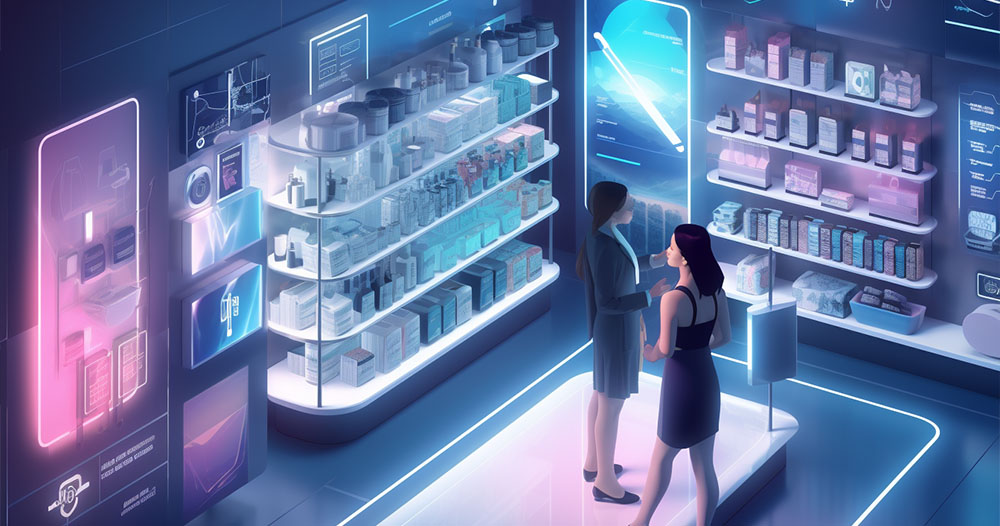
As we look toward the future of beauty brand retail, it’s clear that traditional approaches are no longer enough. Instead, today’s consumers demand more personalized experiences, convenient digital channels, and a seamless omnichannel experience. In this article, we’ll explore some of the new strategies and approaches that will shape beauty retail’s future.
Brands use tech to engage customers with augmented reality makeup, and chatbots for skincare—balance tech with human interaction for lasting relationships.
Meeting The Demands Of Today’s Consumers
As we look to the future of retail for beauty brands, it is clear that meeting the demands of today’s consumers will be critical. Two key areas where customers are increasingly focused are sustainability and inclusivity.
Sustainability has become a significant concern for many consumers, particularly younger generations who prioritize environmental responsibility. As a result, beauty brands must reduce their carbon footprint by using eco-friendly packaging materials or exploring alternative production methods that minimize waste. In addition, brands can offer refillable products or recycling programs to help customers feel good about their purchases.
Inclusivity is another critical area where beauty brands must step up. Customers want to see themselves represented in advertising campaigns and product lines, so companies need to expand their shade ranges and cater to diverse skin types and hair textures. Moreover, customer education and empowerment play an essential role in promoting inclusivity. Brands should provide resources like online tutorials or in-store consultations to help customers find products that work best for them.
As we navigate the changing landscape of modern retail, beauty brands must stay ahead of the curve by prioritizing sustainability and inclusivity while empowering customers through education and accessible resources. By doing so, these brands can build stronger connections with their audience and remain relevant in an ever-evolving industry.
Personalized Experiences: The Key To Success
Beauty brands have come a long way in terms of retail strategies. The industry is now shifting its focus towards personalization, which has proven to be the key to success. However, it is essential to differentiate between customization and personalization.
Customization involves offering customers pre-set options based on their preferences, while personalization goes beyond that by using data-driven insights to create tailored experiences unique to each customer. As a result, beauty retailers prioritizing personalization are likelier to build stronger relationships with their customers and increase sales.
Data-driven personalization uses artificial intelligence (AI) and machine learning algorithms to analyze customer behavior and predict individual needs. This allows beauty brands to offer personalized product recommendations, exclusive deals, promotions, and customized content for each shopper.
Incorporating data-driven personalization into your retail strategy can increase engagement, retention rates, and consumer loyalty. In addition, by providing an experience that caters specifically to each customer’s wants and needs, you create a sense of exclusivity that encourages them to return time after time.
By prioritizing personalization over customization, beauty brands can stay ahead of the competition in today’s rapidly evolving retail landscape. Utilizing technology like AI will allow companies to meet and exceed consumer expectations by creating truly unique shopping experiences that make every customer feel valued and seen.
The Rise Of Digital Channels
As the beauty industry evolves, so do the retail strategies and approaches. One of the most significant changes we have seen in recent years is the rise of digital channels. As they say, “If you can’t beat them, join them,” and that’s precisely what successful beauty brands are doing.
Social media marketing has become a crucial aspect of any brand’s strategy. Platforms like Instagram and TikTok allow direct communication with consumers while engagingly showcasing products. Brands must understand their target audience’s behavior on these platforms and tailor their content accordingly to maximize engagement.
E-commerce platforms have also transformed how consumers shop for beauty products. With just a few clicks, customers can access many options from multiple brands without leaving their homes. Therefore, beauty brands must ensure their websites are user-friendly and visually appealing and provide accurate information about product ingredients, usage instructions, etc.
To succeed in this new era of retail, beauty brands must be willing to adapt continuously. It means staying up-to-date with emerging technologies and consumer trends while also being creative and innovative in their approach. Beauty brands fully embrace digital channels for social media marketing and e-commerce, creating more consumer connections.
Here are four ways beauty brands can leverage digital channels:
- First, collaborate with influencers or micro-influencers to reach wider audiences.
- Use augmented reality apps to let customers virtually try on makeup or hairstyles.
- Host live Q&A sessions with experts or celebrities on social media platforms
- Personalize recommendations using data-driven insights for each customer.
In summary, the rise of digital channels has drastically changed how beauty brands interact with their customers. Social media marketing and e-commerce platforms offer endless possibilities for connecting with consumers effectively. Successful companies adapt to trends, maintain creativity in website design, and make personalized recommendations based on customer data to stay ahead.
Embracing Omnichannel Retail
As seen in the previous section, digital channels for beauty brands have been on the rise. However, it’s essential not to neglect the power of physical stores and in-store experiences. While online convenience is essential, customers still value being able to touch and test products before making a purchase.
To embrace omnichannel retail, beauty brands must find ways to integrate their online and offline presence seamlessly. This can include offering services such as click-and-collect or buy-online-pick-up-in-store options. Additionally, in-store technology, such as virtual try-on tools or personalized product recommendations based on past purchases, can enhance the overall shopping experience.
But it’s not just about merging online and offline strategies. Beauty brands should also focus on creating unique and memorable in-store experiences that leave a lasting impression on customers. For example, pop-up shops or events featuring influencers or experts can draw people into physical locations while providing educational opportunities and exclusive offers.
Ultimately, successful omnichannel retail requires finding the right balance between online convenience and in-store experiences. By understanding customer preferences and behavior across multiple channels, beauty brands can create a cohesive strategy that meets their needs at every step of the purchasing journey.
Enhancing Customer Experiences With Technology
Imagine being able to receive personalized recommendations for your skincare routine without ever leaving the comfort of your own home. This is now possible thanks to technological advancements that have brought us virtual consultations and AI-powered recommendations.
Virtual consultations provide a unique opportunity for customers to interact with beauty experts online, receiving tailored advice for their skin concerns. By utilizing video conferencing software, brands can offer one-on-one sessions with professionals who can guide customers through their beauty routines and suggest products that are best suited for them.
In addition to virtual consultations, AI-powered recommendations take personalization to the next level. By analyzing customer data such as purchase history and product preferences, brands can use algorithms to suggest products that meet each individual’s needs. This enhances the customer experience and increases loyalty by showing customers that their unique needs are being met.
As we move towards a more technologically advanced future, it’s clear that these innovations will play an increasingly important role in enhancing the overall customer experience within the beauty industry. From virtual consultations to AI-powered recommendations, there are endless possibilities for how retailers can utilize technology to improve interactions between consumers and brands.
- Virtual consultations allow for expert advice from anywhere
- AI-powered recommendations utilize data analysis for personalized suggestions
- Personalized experiences increase customer satisfaction and loyalty
- Technology continues to shape and enhance the future of retail in the beauty industry
By embracing these new technologies, beauty brands have the potential to revolutionize how they engage with customers both online and offline. As we continue to see advancements in this field, it’s exciting to think about what other innovative solutions may arise to enhance our shopping experiences even further.
Augmented Reality And Virtual Try-On Tools
Augmented Reality and Virtual Try-On Tools are the latest buzzwords in the beauty industry. These tools provide an immersive experience to customers, allowing them to try on products virtually before making a purchase. Interactive engagement is crucial for brands looking to stand out in today’s highly competitive market, and AR/VR technology provides innovative solutions.
Beauty retailers have quickly adopted this technology, with several significant players introducing virtual makeup try-on features within their mobile apps or websites. This move has enhanced customer experience and increased conversion rates significantly. Customers can now see how different lipstick shades look on their faces without ever having to apply them physically.
The benefits of Augmented Reality and Virtual Try-On Tools go beyond just convenience. Brands can use data collected from these interactions to personalize recommendations based on individual preferences, creating a more personalized shopping experience for customers. Furthermore, they offer a platform for experimentation where customers can play around with new looks and share them on social media.
Incorporating Augmented Reality and Virtual Try-On Tools into retail strategies should be a priority for any beauty brand looking to stay ahead of the curve. By providing interactive engagement through innovative solutions, brands can create an emotional connection with their customers beyond traditional marketing tactics. As we continue to navigate the post-pandemic world, it’s clear that digital transformation will remain at the forefront of driving growth in the beauty industry – those who embrace it will reap long-term rewards.
The Power Of Chatbots For Personalized Recommendations
The world of beauty retail has been revolutionized by a new technology that is taking the industry by storm. Chatbots have become a potent tool for personalizing recommendations and boosting customer satisfaction. These AI-driven assistants can provide customized product suggestions tailored to each individual’s unique needs and preferences.
The effectiveness of chatbots in providing personalized advice cannot be overstated. They can analyze vast amounts of data on customer behavior and purchase history, making them better equipped than any human sales associate could ever hope to be. By leveraging this data, chatbots can offer targeted recommendations that are more likely to result in a sale – which benefits both the retailer and the consumer.
One key advantage of using chatbots for personalized recommendations is their ability to learn from every interaction they have with customers. This means that they become even more effective over time at predicting what products will appeal to different individuals. As a result, customers feel like they are receiving genuinely bespoke advice that considers their specific concerns and goals.
In short, chatbots represent a significant shift in how retailers approach beauty sales. By offering AI-driven beauty advice and customized product recommendations, these tools can help brands stand out in an increasingly crowded marketplace while simultaneously improving the shopping experience for consumers everywhere.
Balancing Technology With The Human Touch
As technology develops rapidly, it’s easy for beauty brands to get swept up in the latest trends and forget what truly matters: the human touch. While automation and AI can streamline processes and increase efficiency, they cannot replace the emotional connections that customers crave.
Humanizing technology is critical to creating an exceptional customer experience. Therefore, beauty brands must find ways to incorporate technology while still maintaining personal interactions with their customers. For example, offering virtual try-on experiences or personalized product recommendations through algorithms can enhance the shopping journey while also providing a sense of individual attention.
However, it’s important not to rely solely on technology to create these connections. One way to balance this is by training staff members to build relationships with customers in-store or online. In addition, empowering employees with knowledge about products and services allows them to connect more authentically with customers, increasing loyalty and repeat business.
Ultimately, beauty brands must remember that behind every click, swipe, or a scan is a natural person seeking connection and validation. By finding innovative ways to blend technology with human interaction, brands can make lasting impressions on their customers.
- Providing personalized virtual consultations
- Incorporating chatbots into customer service
- Offering interactive tutorials through social media platforms
- Developing mobile apps that offer exclusive content and rewards
- Creating immersive experiential events both in-store and online – Utilizing augmented reality and virtual reality technology to enhance the customer experience.
The Importance Of Authentic Human Interaction
As technology continues to advance and shape the future of retail, it is essential not to forget the significance of authentic human interaction. Building customer trust can be challenging in our digital age, where face-to-face interactions are becoming increasingly rare. However, creating connections between customers and brand representatives can profoundly impact overall customer satisfaction.
One way to foster these connections is through personalized experiences. Beauty brands should prioritize training employees to actively listen to customers’ needs and preferences. By tailoring recommendations based on individual concerns or interests, consumers are more likely to feel valued and understood by the brand.
Another approach is community building. Brands that create spaces for like-minded individuals to connect over shared interests – whether through online forums or physical pop-up events – establish themselves as more than just a product provider but a source of support and inspiration.
Ultimately, investing in authentic human interaction builds customer loyalty and sets beauty brands apart from competitors who rely solely on technological advancements. As a result, finding ways to create meaningful connections with consumers will undoubtedly continue to play a crucial role in shaping successful retail strategies for years to come.
Building Lasting Relationships With Customers
Imagine walking into a beauty store and being greeted by a friendly, knowledgeable sales associate who helps you find the perfect product and remembers your name and preferences. This type of personalized service is what builds lasting relationships with customers.
Customer loyalty has always been important for any business to thrive. Still, in today’s world, where competition is fierce, and consumers have endless options, earning customer loyalty has become even more crucial. And one effective way to do this is through emotional connections.
Emotional connections go beyond just selling products; they involve creating an experience that resonates with customers on a deeper level. It could be as simple as remembering their names or offering customized recommendations based on their skin type or concerns. By doing so, beauty brands can establish trust and build a customer bond beyond transactional interactions.
Moreover, building lasting customer relationships requires continuous brand efforts to keep them engaged and interested. Brands should use channels such as social media, email marketing, and events to stay connected with their customers and offer exclusive benefits like discounts or early access to new launches. These efforts show that the brand values its customers’ patronage while keeping them excited about future offerings.
In conclusion, establishing emotional connections with customers is essential for building long-term customer loyalty. Beauty brands can create experiences that resonate deeply with individuals’ needs and desires by focusing on personalization and continuously engaging with customers through multiple channels. The key takeaway here is that building strong relationships takes effort to build, but once achieved, these bonds lead to thriving businesses!
Conclusion
In conclusion, the future of retail for beauty brands lies in creating personalized experiences that meet the demands of today’s consumers. To succeed, retailers must embrace digital channels and omnichannel retail while enhancing customer experiences with technology like chatbots. But balancing this technology with authentic human interaction is essential, as building lasting customer relationships is critical.
As a beauty brand retail strategy analyst, I believe that staying ahead of these trends is crucial for success in an ever-evolving industry. We need to proactively meet our customer’s needs and desires by offering exceptional service through various channels. Remember, at the end of the day, it’s all about delivering an unforgettable experience that leaves them returning repeatedly. So let’s stay on top of our game and continue to innovate to maintain our position as leaders in this space!
Start building your brand with us today. Click here.


